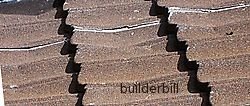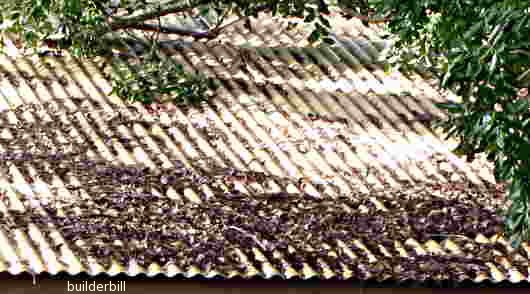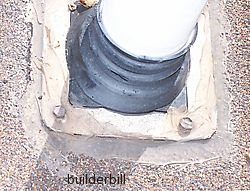 |
|||||||||||
Roof care and roof maintenanceThis article is about a subject that is not on the average homeowners list of priorities, roof care or roof maintenance. The attitude "out of sight, out of mind" is well and truly adhered to by most homeowners and building managers. Don't wait until the roof starts leaking, you may be up for big dollars then! Apply a bit of care to you roof and you will not regret it.
Intro to roof careFor general roof safety issues please read this page, it is not long, it won't take up too much of your time but it is important. Try to have a look at your roof at least once a year, or after any significant bad weather event. DIY roof care or get someone else to do itDon't go on a roof if you feel even a little bit apprehensive about doing so. Get someone else do do it. It is no big deal, some people are comfortable with roofs, some are not. To get up onto most house roofs you will need a ladder. Like most things in DIY there are a few basics to know if you have never done it before. On new ladders there are usually a lot of printed instructions, load ratings and disclaimers, but if you pick up a hire one, or a used one then they could be missing. Take a look at my page on ladder handling and safety if you are new to using ladders. If your roofs are fairly steep, that is so steep that you find it hard to stop sliding a touch while walking on the roof, consider making a cat ladder. Walking on a roofThe basic principal when going onto a roof for any reason, (after safety of course), is to not make matters worse. That is don't damage the roof in any way. why make more work?
Gutters, downpipes, box gutters and roof valleys.These are the main problem areas and mainly they stem from not being clean and allowed to do their job properly
Adding extras, TV aerials, Satellite dishes etc.An awful lot of roof care problems are caused by guys fixing extras on a roof and not really having enough training or inclination to do the right thing. If you are getting a job done on a roof it would be good to inspect it before paying for the service and if any damage has been done get them to fix it.
Solar systems, roof collectors.While doing an annual roof clean it is plain silly to forget the glass surfaces of the solar collector panels or tubes. Dust builds up on the surface of them and so it is logical while you are up there to give them a clean with water. You paid good money for the solar system and to keep it working in top condition is so easy. If you have a mains pressure water tank up on the roof, there will be a pressure relief valve attached to it. This is set so that if the pressure of the hot water builds up in the tank it will blow off and release the pressure. Roof penetrations
The point where pipes and services come through a roof surface are called penetrations. You will have vent pipes for for the waste water system, maybe water pipes for solar hot water, you may have skylights, chimneys etc. Check around the top sides of all these for signs of water ponding. The water should flow easily around them and not leave a pool trapped. Check that the flashing are in good condition and that any sealant used looks OK. The fitting in the photo may still be waterproof, but I'd be flicking the silicone seal to see that it is still stuck down. When I see overuse of sealant like this I am always suspicious. This one I would remove, clean the roof and the gasket and if it was OK I would replace it with just smear of silicone where needed, at the top end. These things in this small size are so cheap that it is probably better to replace it before the rubber boot perishes, Not found it yet? Try this FAST SITE SEARCH or the whole web |
Hire Equipment  Furniture Fittings - Architectural Hardware - Electronic Locking Systems - Technical Hardware BuilderBill sponsorship
Quick Illustrated Roofing Glossary Pages.Types of roofsRoof Features Roof Framing Roof Trusses Roof Coverings In Depth Roofing Articles
|
||||||||||
|
|
|||||||||||
|
Please Note! The information on this site is offered as a guide only! When we are talking about areas where building regulations or safety regulations could exist,the information here could be wrong for your area. It could be out of date! Regulations breed faster than rabbits! You must check your own local conditions. Copyright © Bill Bradley 2007-2012. All rights reserved. |
|||||||||||


